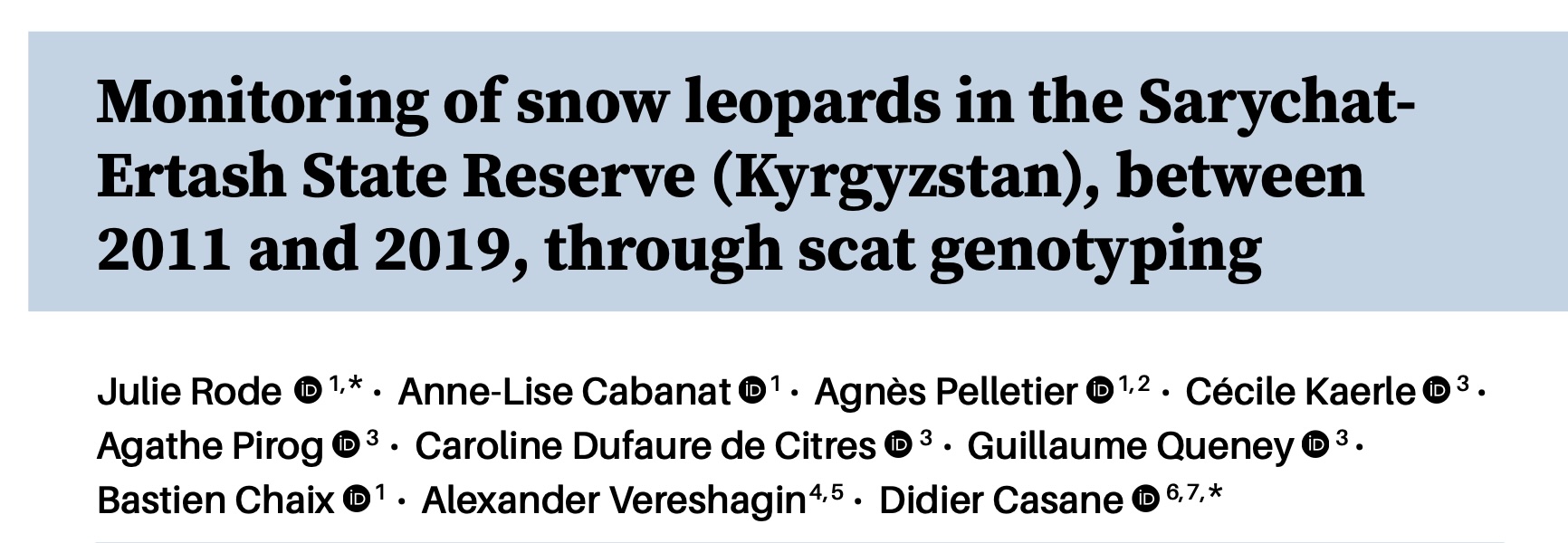Please find details below of a new article added to our Bibliography:
Title: First large‑scale assessment of snow leopard population in China using existing data from multiple organizations
Author: Li, X., Wei, C., Chen, X., Jia, D., Li, P., Liang, S., Jikmed, A., Gao, Y., Zhao, X., Chu, M., Sharma, K., Alexander, J. A., Lu, Z., Xiao, L.
Abstract: Abundance estimation of large carnivores is essential for their effective conservation planning, yet estimating population size is challenging due to their elusive and wide-ranging nature. China is estimated to encompass 60% of the snow leopard Panthera uncia habitat, making it a crucial pillar for global snow leopard conservation. However, no large-scale population assessment has been conducted despite scattered survey effort accumulating rapidly in recent years. This study combined and standardized existing camera trap survey data from 12 sites collected by four organizations during 2015 ~ 2021 to estimate snow leopard population in an area of 360,000 km2 on the Tibetan Plateau, China. The representativeness of existing survey was evaluated based on two habitat stratification approaches to achieve less biased population assessment. Spatially explicit capture-recapture (SECR) models were applied for snow leopard density estimation and the top-ranked model showed a significant positive correlation between conservation priority strata and density. An average snow leopard density of 0.90 /100 km2 (95% CI: 0.68 ~ 1.21 /100 km2) and a population size of 1,002 (95% CI: 755 ~ 1,341) individuals was estimated for the defined snow leopard habitat. Two more conservative estimates of 971 (95% CI: 732 ~ 1,287) and 978 (95% CI: 737 ~ 1,267) individuals were generated within two defined survey regions, in which our data had higher representativity. This study presents a practical approach to synthesize existing population survey data for large-scale population assessments of individually identifiable species. The estimated number represents 11 ~ 21% of the global snow leopard population, indicating high conservation value of this region.








